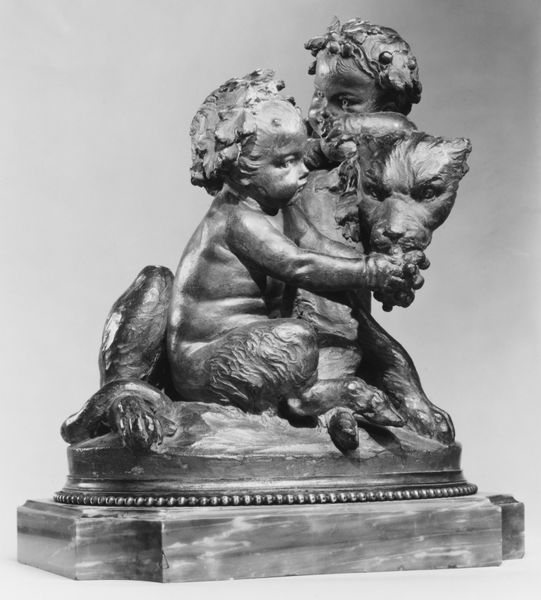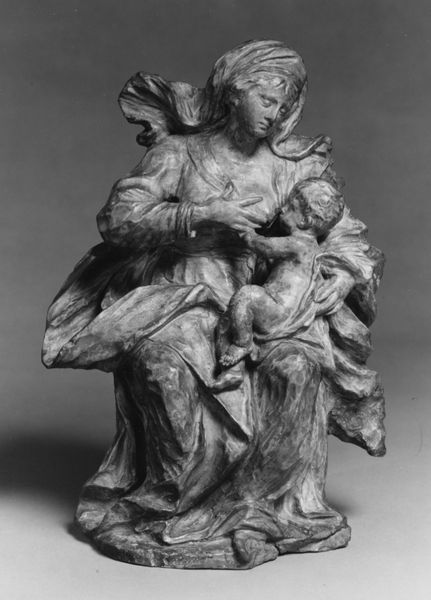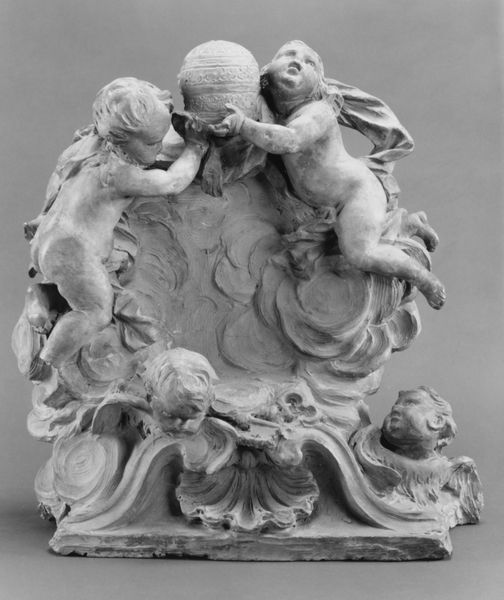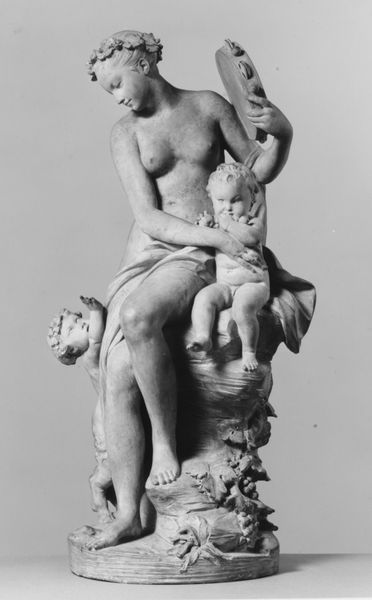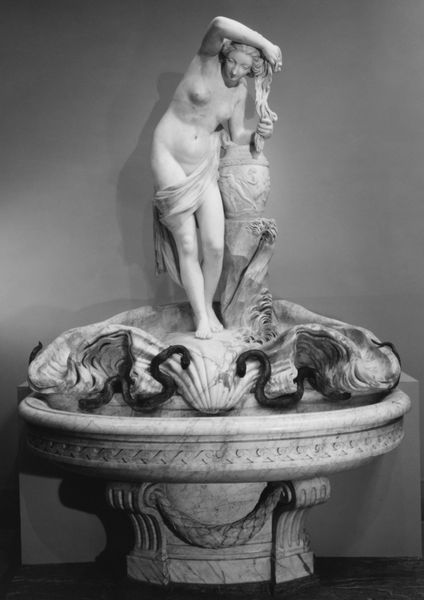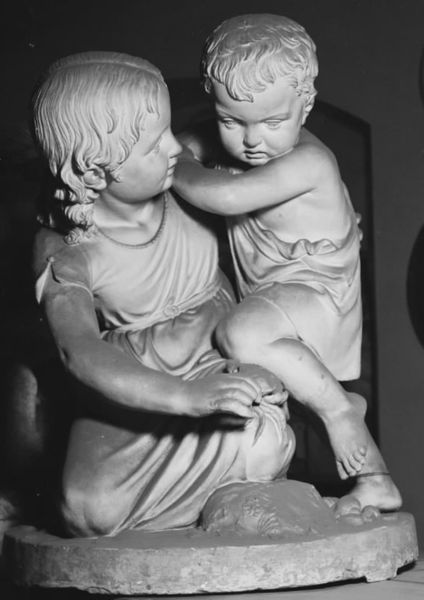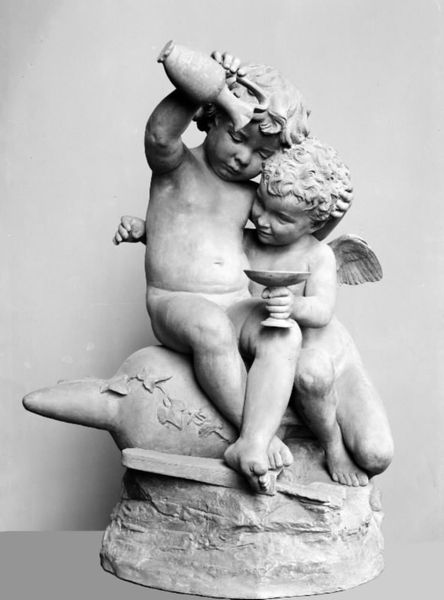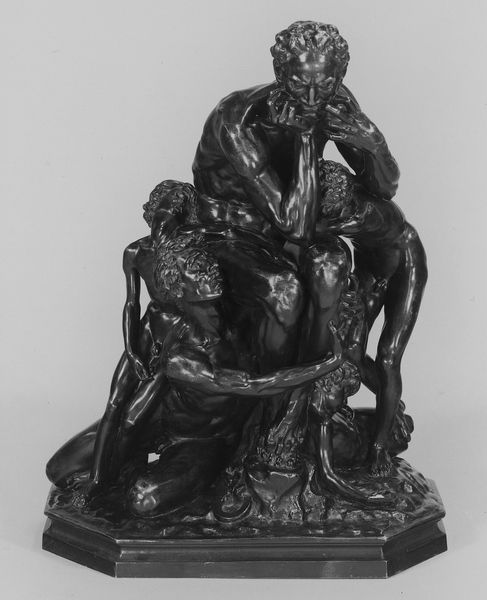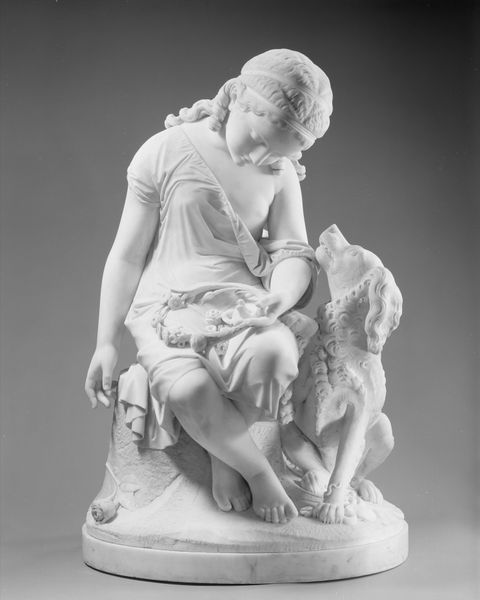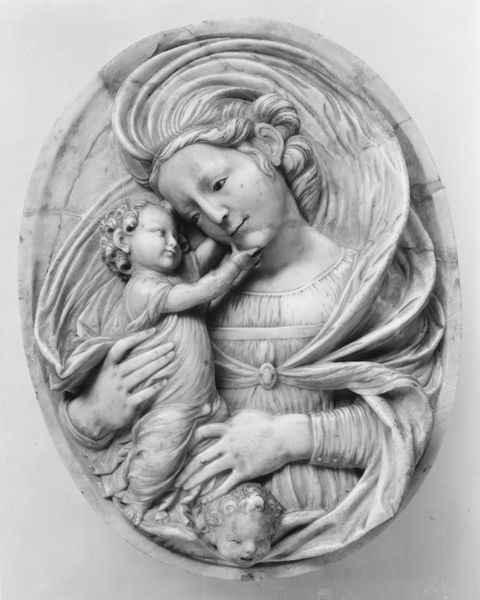
bronze, sculpture
#
allegory
#
sculpture
#
bronze
#
sculptural image
#
figuration
#
sculpture
#
decorative-art
#
rococo
Dimensions: Height (without base): 10 1/8 in. (25.7 cm)
Copyright: Public Domain
Editor: This bronze sculpture, “Infant Satyrs with Grapes” by Louis Félix de La Rue, created sometime between 1730 and 1765, exudes a playful innocence. The details, especially the rendering of the grapes and the children's faces, is striking. What does this piece tell us about the role of sculpture in the decorative arts of that era? Curator: It's tempting to get lost in the charm, isn’t it? But remember, Rococo decorative arts, particularly sculpture like this, were often closely linked to power and patronage. Think about where this might have been displayed – likely in a private collection, a luxurious home. This sculpture and similar pieces provided the elite an image of an imagined classical, sensual innocence but also spoke volumes about the patron’s wealth and access to refined goods and artistry. It evokes an Arcadia, distant from the everyday realities experienced by most people in the 18th century. Editor: So, is the choice of subject matter, infant satyrs indulging in grapes, more than just a pleasant image? Curator: Precisely. Grapes, satyrs, all point to Bacchic imagery –associated with pleasure and abandon. But look at the infant satyrs. Does that suggest innocence, a connection to nature or a controlled version of such themes catered to an aristocratic audience? The material also matters, bronze, being both durable and costly, further signals the commissioner's status. How do you read the relationship between form and cultural context? Editor: That context makes the image resonate differently. I was drawn in by the apparent charm, but considering where and for whom it was made reveals a deliberate message of luxury and status. Curator: Exactly! By examining the cultural and socio-political implications, what initially appeared as pure delight reveals a far richer narrative of the world that birthed it. Editor: Thinking about this piece in the broader context of 18th-century society is definitely a different way of viewing art.
Comments
No comments
Be the first to comment and join the conversation on the ultimate creative platform.
